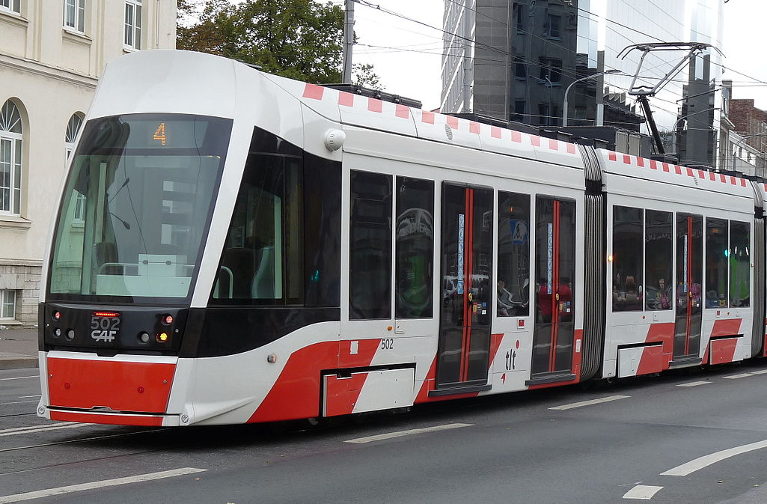“Free public transportation implies many changes, a completely new way to look at the city, both in terms of how we move and how we tax, but also how we live, where we live, how we relate to each other as a society, and our broader relationship to the urban, regional and global eco-system.” Judith Dellheim & Jason Prince [1]
With cities becoming the main human inhabitant, and even slowly replacing the Nation-State as major economic and political factors, the importance of the question about the quality of urban life is increasing. How we move around in our urbanized reality is an integral part of that issue.
The movement within cities determines to a large degree their vibrancy and the way they will develop in the future. As author Jane Jacobs notes [2], a feature of a great city is the mobility of residents and fluidity of use across diverse areas of varying size and character. Furthermore, transportation has an important role to play in the age of rapidly unfolding urbanization and environmental crisis.
Unfortunately, the car has been made into the main tool for urban mobility – promoted by local and national authorities, big businesses, as well as mainstream city planners. This supposedly comfortable and quick means of transportation, however, hides many dangers for urban inhabitants, as well as for the environment.
The mass use of cars as one of the most atomized and privatized means of transportation today, according to the Union of Concerned Scientists, is a major cause of global warming. This is evident from what they write in one of their reports: In total, the US transportation sector—which includes cars, trucks, planes, trains, ships, and freight—produces nearly thirty percent of all US global warming emissions, more than almost any other sector [3]. It is well known that, as much of the research on the subject suggests [4], car traffic causes significant health problems – from air pollution to obesity. It also pollutes the urban environment with noise, as well as being directly related to the reshaping of cities into urban sprawls distanced away from areas that provide basic needs and services.
Benefits of Free Public Transport
Public transport, on the other hand, is of much friendlier character to both communities and nature, but has been embedded into the economistic, privatized logic of capitalism. While it allows for large groups of citizens to move around the city in an economically efficient manner without creating traffic, urban noise, or air pollution, it is being highly neglected by municipalities. Instead, it is viewed as another business niche, through which surplus value can be extracted through the additional taxation of passengers and can be helpful to boost economic growth. In this narrow economistic way, a transportation means with the capacity to significantly improve urban space is being neglected or is being exploited exclusively for the generation of profit for the few.
However, there is a global movement that fights for making public transport free. Its target is the abolition of the socially exclusive fare systems that are currently in operation in most cities around the world. Instead, it suggests that the expenses required for functioning should be covered through the municipal budget, as it is mutually beneficial for both car drivers and bus riders.
The benefits of free public transport (FPT) are much more holistic than the atomized, privatized means of transportation that dominates the contemporary streets, and can contribute to the creation of democratic and ecological cities by allowing citizens to move freely around the urban space in groups, thus laying the foundations of vibrant communities and agora in the authentic ancient meaning of the term. Some of these benefits include:
- Environmental friendliness – reduced air pollution, helpful to mitigate global warming, less oil consumption etc.
- Health benefits – reduces illnesses that are linked to automobile generated pollution, as well as helps in the reduction of obesity
- Safer for the urban space – reduces car traffic, urban noise, etc.
- Socially inclusive – it allows people to move around their city, without creating financial barriers for some urban dwellers
- Creates preconditions for the emergence of agora – socialization and creation of community feeling
Free public transport is not some utopian vision for dreamers. On the contrary, it is already functioning in cities around the world. The Estonian capital Tallinn is one of the most famous examples for working FPT. The scheme was such a success that Estonia is expanding it on a nationwide level [5]. In France at least 15 towns and cities are experimenting with different forms of FPT [6]. Similar processes can be observed in Germany [7] and in other parts of the world.
In fact, in most places public transportation is already being subsidized to a certain degree by local or national authorities, with fare collection systems being a source of additional income for private or semi-private owners. Additional financial support instead can be found in the increasing of taxation for car users, thus encouraging people to use public transport and liberating the urban streets from the suffocating, polluting traffic. Some of the long-standing cases have shown that FTP can be sustained through subsidies.
Free public transport and citizen participation
For citizens to be able to feel that their taxes are not going to be spent behind closed doors, a good idea could be the parallel introduction of participatory budgeting on a municipal level. In this way people will be able to determine what portion of the city’s budget should be spent in the form of subsidies for FPT, and thus have an idea of what the real costs are and how they can best be covered. As sociologist Erik Olin Wright suggests [8], public transportation has to be paid for but it should not be paid for through the purchase of tickets by individual riders—it should be paid for by society as a whole.
“This should not be thought of as a ‘subsidy’, in the sense of a transfer of resources to an inefficient service in order for it to survive,” he says, “but rather as the optimal allocation of our resources to create the transportation environment in which people can make sensible individual choices between public and private means of transformation that reflect the true costs of these alternatives.”
From this follows that FPT is not a panacea but should be thought of in relation to the general struggle for the right to the city. Its implementation through the current non-transparent mechanisms of local authorities can compromise the whole idea. Instead, FTP should be linked to projects like participatory budgeting and libertarian municipalism, in order to allow citizens themselves to observe the way their taxes are being spent.
The implementation of FPT cannot be left to local bureaucrats. There must be grassroots pressure by social movements. A good example for such activism can be found in the Swedish and Norwegian network Planka. Part of their activities is the so called freeriding insurance [9]. With it they aim at showing how FPT can function in a grassroots manner. In its essence it is a cooperative fund, to which members contribute monthly with certain small amounts of money, and in case they get caught riding public transport without a ticket or a card, the freeriding insurance covers their penalty. With this activity Planka attempts to not only help its members get around the city, but to advance a vision for a free public transportation, owned collectively by all citizens and controlled by the workers that operate it.
The example of Barcelona in 1936
In history there are also cases when citizens took their public transportation system in their hands. In 1936, during the Spanish Revolution, the rebellious population of Barcelona took the control the entire city. The public transportation system was placed under direct workers control [10]. The various modes — buses, subway, streetcars — were all managed through elected committees, answerable to assemblies of the workers. An engineer was elected to each administrative committee, to facilitate consultation between manual workers and engineers. There was an overall assembly for decisions that affected the transit-system as a whole, where all citizens could voice their concerns regarding the transportation system. There was no top manager or executive director. A 7-member elected worker committee was responsible for overall coordination.
One of the first acts of the citizens of Barcelona through this new self-managed public model was the abolition of the fare zone system – a zoning scheme which forced people taking longer commutes to pay more. This in practice affected mainly the poor that lived away from the city center. They switched instead to a flat fare throughout the metropolitan area, in order to make the transportation system more inclusive. Despite this lowering of the fare, the worker-run transit system operated at a profit. This move was quite radical for its time and can be compared to the contemporary idea for FPT.
Conclusion
Free public transport is being viewed by many as a beacon of hope in times when cities are being plagued by social and environmental crises. And indeed, it can be invaluable for the creation of democratic and ecological cities. But for this to be the case, it needs to be combined with essentially democratic urban practices like participatory budgeting. Furthermore, free public transport must be implemented from below, by social movements that will fight to reclaim their right to the city.
Footnotes:
[1] Judith Dellheim & Jason Prince, Free Public Transport: Or Why We Don’t Pay to Ride Elevators, Montreal, Black Rose Books 2018, p.7
[2] https://en.wikipedia.org/wiki/
[3] https://www.ucsusa.org/clean-
[4] https://academic.oup.com/
[5] https://ftnnews.com/other-
[6] http://www.france24.com/en/
[7] https://www.theguardian.com/
[8] https://bigthink.com/think-
[9] http://planka.nu/eng/
[10] http://www.workerscontrol.net/






